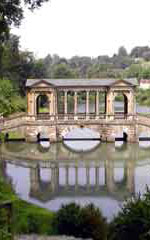Prior Park Landscape Garden
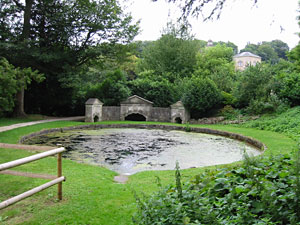 In 2007 Minerva completed a programme of works at The National Trust's
Prior Park Landscape Gardens in Bath. Minerva were the principle stonework
contractors for the conservation of the Cascade and Serpentine Lake.
In 2007 Minerva completed a programme of works at The National Trust's
Prior Park Landscape Gardens in Bath. Minerva were the principle stonework
contractors for the conservation of the Cascade and Serpentine Lake.
Prior Park Landscape Garden is an 18th-century landscape garden, designed
by the poet Alexander Pope and the landscape gardener Capability Brown.
The garden was influential in defining the style of garden known as the "English
garden" in continental Europe.
Prior Park was created by local entrepreneur and philanthropist Ralph
Allen from about 1734 until his death in 1764, with advice from both Pope
and Brown. Allen became mayor of Bath in 1742, having started off working
in the post office. Much of the "Bath stone" so prevalent in
Bath came from Allen's limestone Combe Down and Bathampton Down Mines.
In around 1742, Allen commissioned architect John Wood to build a mansion
within the park, which is now owned by Prior Park College.
The 28 acre landscape garden is set in a dramatic site running down a small steep valley, with fine views of the city of Bath. Its many interesting features include a Palladian bridge, Gothic temple, gravel cabinet, Mrs Allen's Grotto, three lakes a cascade and a serpentine lake. Minerva undertook the conservation of the cascade and large scale rebuilding work to the Serpentine lake, looking across the Bath skyline from Prior Park, one can see the tower of St Stephens church, Lansdown, this was another major project undertaken by Minerva at the same time (completed summer 2007).
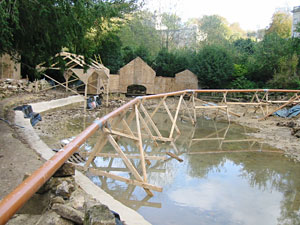 |
The new Serpentine Lake now links with the reconstructed cascade
to channel the water down from the lake which was situated at the
spring line. The first stage involved excavating the Serpentine Lake,
which had been in-filled in the 19th century leaving only a small
pond. The initial stages of the job was concerned with the recording of the existing fabric, the careful dismantling of the Cascade, and the consolidation of the remains of the original lake walls. |
|
| The original naturalistic masonry dressing to the Cascade, which imparts a romantic, pastoral scheme much favored by the Georgians, disguised a highly sophisticated and formal masonry structure beneath. The series of masonry cells threw light on the level of understanding the original builders had for the job in hand. To wit, a large water feature on a steep, shifting gradient. It needed to be flexible and cope with the inevitable leeks. The fact that this part of the structure was relatively undamaged is a testament to their skills. | 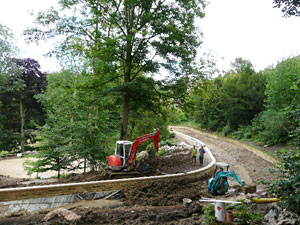 |
|
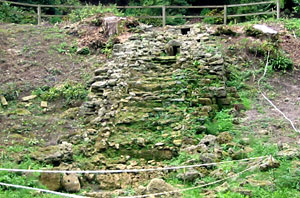 |
Having completed a stone by stone recording, the team dismantled the over structure, consolidated the sub structure and rebuilt the cascade steps and slopes. | |
| The flow of water is controlled by a series of conduits and sluice gates at the head of the cascade enabling the visitor to be treated to a variety of effects, from gushing mountain stream, to a more tranquil, sylvan flow. Again, these had to be thoroughly recorded prior to a scheme of repair and replacement where stone had been robbed out or damaged by tree root growth. An original elm bore pipe was preserved within one of the narrow control channels and new sluice gates installed. | 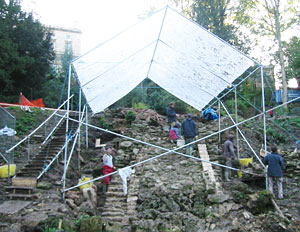 |
|
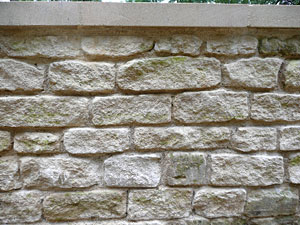 |
The canal walls were rebuilt following a certain amount of dismantling and consolidation. The walls, built to the original serpentine lines, also had to incorporate the new rubber lake liner and disguise the massive concrete retaining walls introduced by the engineers. We used over 30 tons of guillotined Cotswold stone and 250 linear meters of sawn Limpley Stoke ground copings to finish the walls. A Hydraulic Lincolnshire NHL 5 with a Moreton Cullimore Thames gravel sand created a building and conservation mortar. | |
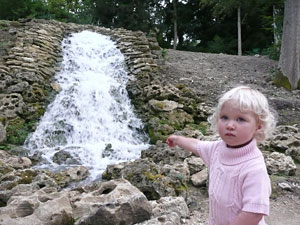 |
Pictures, from top to bottom: Lake before work commences. Dug out lake bed, with temporary culvert in place Bend in lake. Cascade before repair. Cascade during repair. Detail of lake wall and coping. Cascade in operation, with Violet. |

